About Toyo University The Akabanedai Campus is Complete!
The Faculty of Design for Welfare Society and Faculty of Health and Sports Sciences were newly established at the Akabanedai Campus in addition to a gym, library, and cafeteria. In addition to the Faculty of Information Networking for Innovation and Design, established in 2017, we have developed an environment suitable for advancing cutting-edge research.
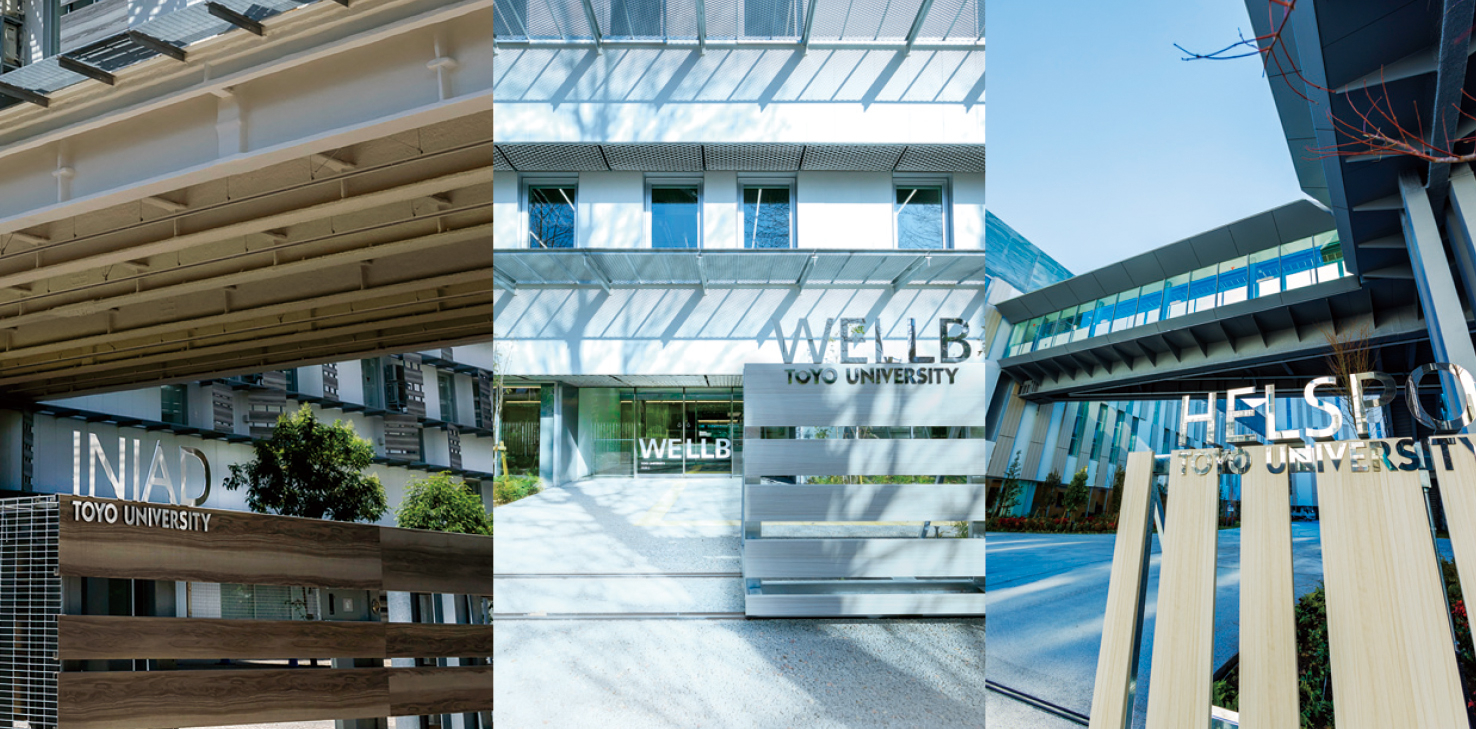
History of the Akabanedai Campus
The Akabanedai Campus is a new campus that was opened in 2017, following an agreement with Kita-ku, Tokyo, and Urban Renaissance Agency (UR). The digital-cloud-based building, INIAD HUB-1, was built in conjunction with the Faculty of Information Networking for Innovation and Design, which opened with the Campus in 2017. Subsequently, in 2021, WELLB HUB-2 was completed, and the Faculty of Human Life Design moved from Asaka, Saitama Prefecture, to the Akabanedai Campus. Following the construction of the International Residence, AI-House HUB-4, in 2022, HELSPO HUB-3 was completed in 2023, completing the construction of the Akabanedai Campus. The Campus was designed by Kengo Kuma and Associates and Ishimoto Architectural & Engineering Firm, inc. We aim to create a Campus that exists in harmony with the local community.

NEW The Akabanedai Library Opens!
The opening ceremony of the Akabanedai Library at HELSPO HUB-3 was held on April 1, 2023. The joy of the opening was shared with participating students. The Akabanedai Library has three floors from 1st to 3rd, features around 270,000 books and 433 seats, along with various types of learning spaces, including group study rooms, seminar rooms, and self-study rooms. It also features a children’s library (nicknamed “Yell”), a first for Toyo University. The library aims to be open and accessible, with plans to accommodate children from the local community and their guardians.

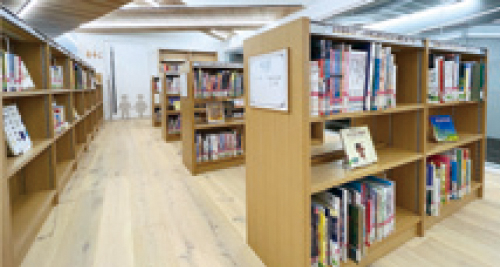
Children’s library “Yell”
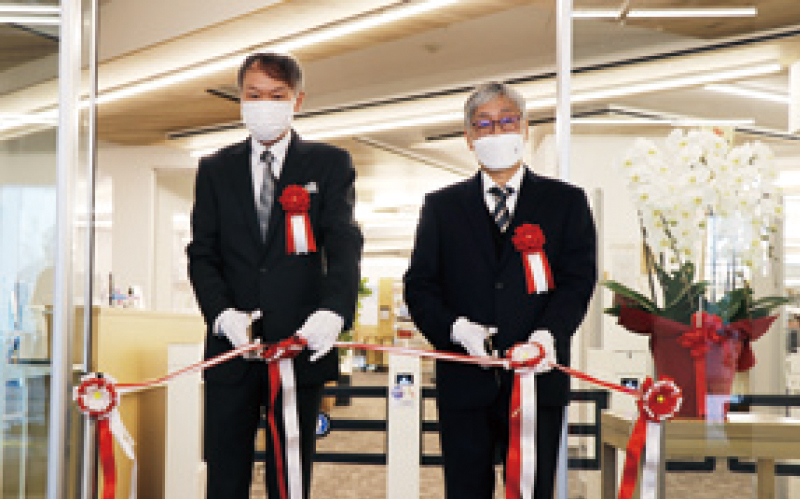
Ribbon cutting by Shin Fujimura, Director of Toyo University Library (pictured right),
and Mr. Noritaka Kikuchi, Director of Akabanedai Library (pictured left)
Opening Ceremony for the Faculty of Design for Welfare Society, Faculty of Health and Sports Sciences, and the Graduate School of Health and Sports Sciences
An opening ceremony was held on April 22 at the Akabanedai Campus to commemorate the opening of the Faculty of Design for Welfare Society, the Faculty of Health and Sports Sciences, and the Graduate School of Health and Sports Sciences. At the ceremony, President Yaguchi remarked, “It is not an overstatement to say that Toyo University’s future depends on the various activities developed in unison with local communities by the new faculties and graduate schools, including the Faculty of Information Networking for Innovation and Design, at the Akabanedai Campus. I hope that students will think deeply for themselves and strive hard to develop their abilities for the well-being of other people.
In the second half, symposiums were held separately for the two faculties. We invited experts to attend, and together with faculty members, the symposium was a valuable opportunity to discuss the future of sports science and the ideal state of Akabanedai as a place to live and learn.
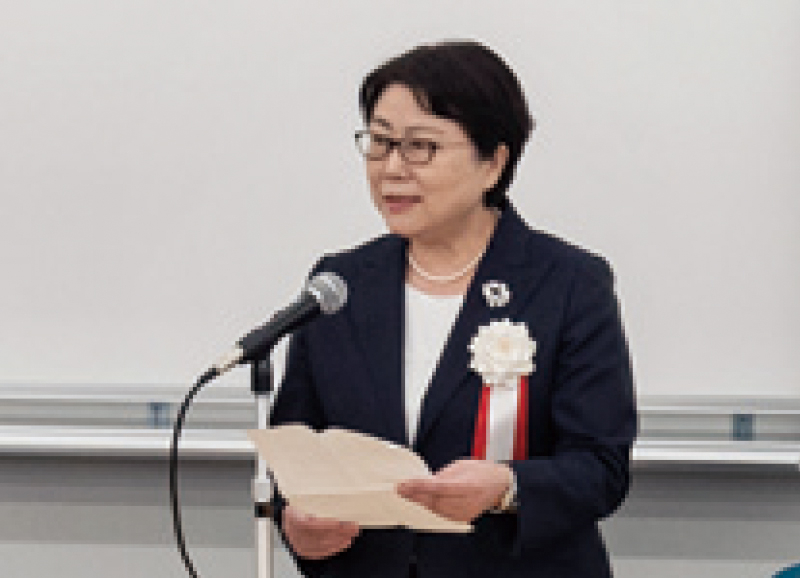 |
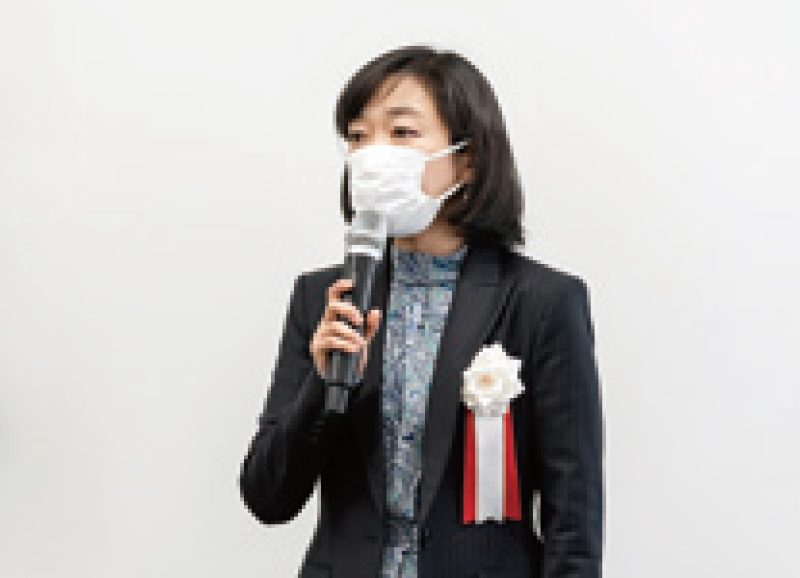 |
| President Etsuko Yaguchi |
Hiroko Mizumura,Dean of the Faculty of Design for Welfare Society |
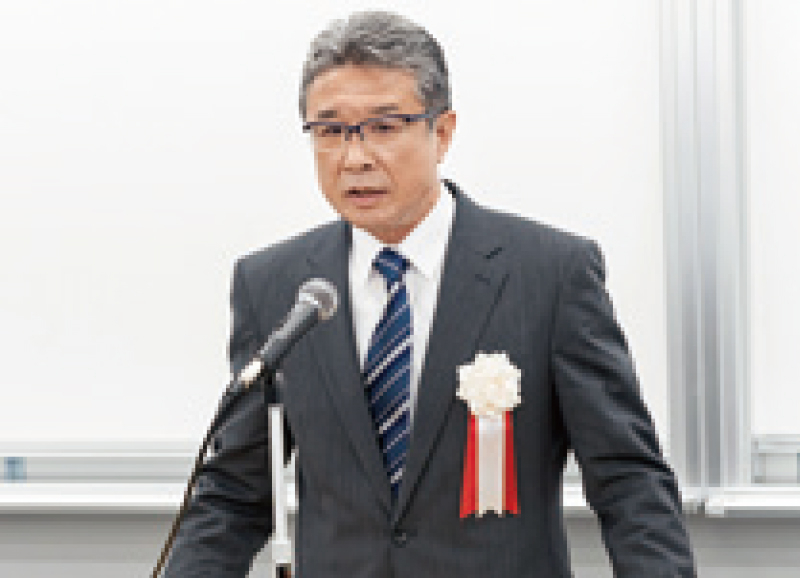 |
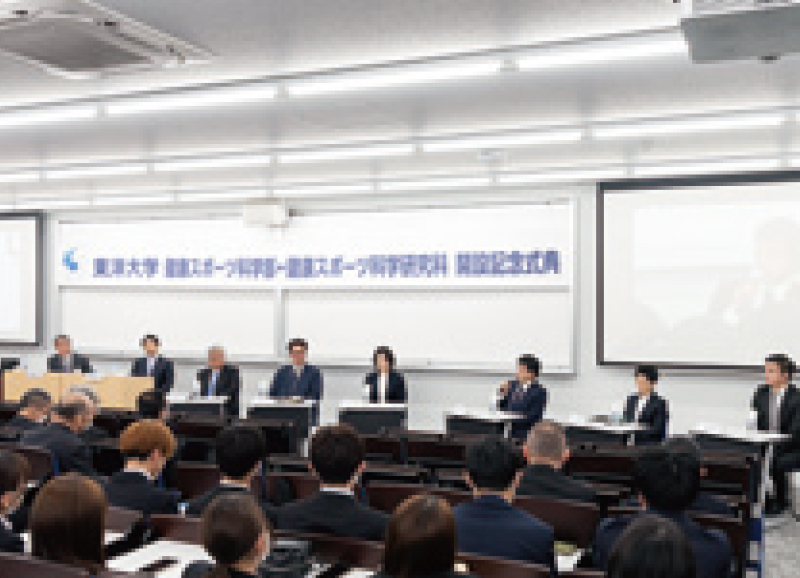 |
|
Kyohei Saito,Dean of the Faculty for Health and Sports Sciences |
Opening ceremony symposium |
Comprehensive Facilities and Amenities (WELLB/HELSPO)
At WELLB and HELSPO, which are part of the Faculty of Design for Welfare Society and the Faculty of Health and Sports Sciences, learning to bring about better lifestyles and environments is developed around the keywords of Recreation & Living, Health & Sports, and Environment & Creation. Cutting-edge facilities for nurturing creative talent and practical training rooms for hands-on learning are available, offering students a wide range of choices.
■ Multipurpose Room 1
There are various gym facilities at HELSPO. Multipurpose Room 1 includes a bouldering wall that can be used in exercise classes, and students can learn bouldering throughout the semester as one of their practical courses.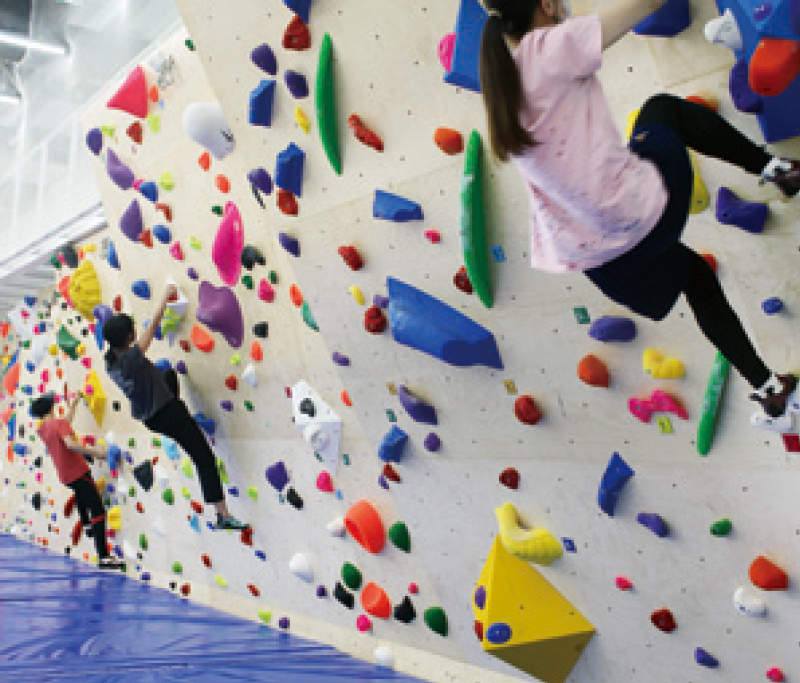
■ Biomechanics Practical Training Room
This room features devices that can measure body movements using a 360-degree surrounding camera and sensors attached to the person. By performing mechanical calculations from the measured values, it is possible to verify matters such as how force is transmitted in sports and what constitutes an efficient form.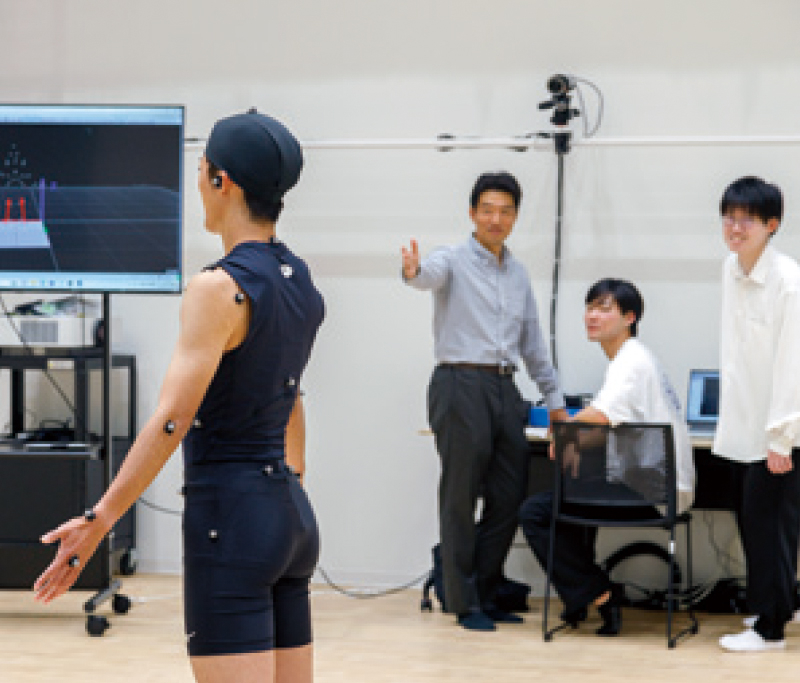
■ Exercise Physiology Practical Training Room
Here, it is possible to measure a person’s overall endurance. This is done by using exercise equipment like bicycles and devices that can measure exhalation and heart rate during exercise and calculate the maximum amount of oxygen that can be taken into the body. In addition, this room is equipped with devices that create a low-oxygen environment to simulate high-intensity exercise environments.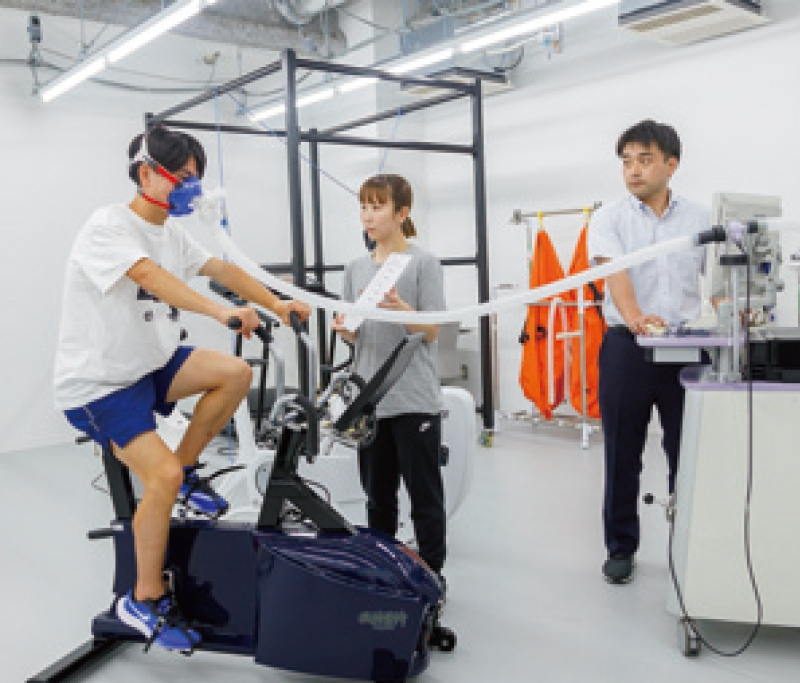
■ Laboratory
This space for experiments features a large atrium and is used to conduct a wide range of activities, including various experiments, seminars, and presentations of works. Student work desks are installed on the second floor and can be used anytime. Students can also receive support from resident technicians who provide support for machine operation and creative activities such as photography.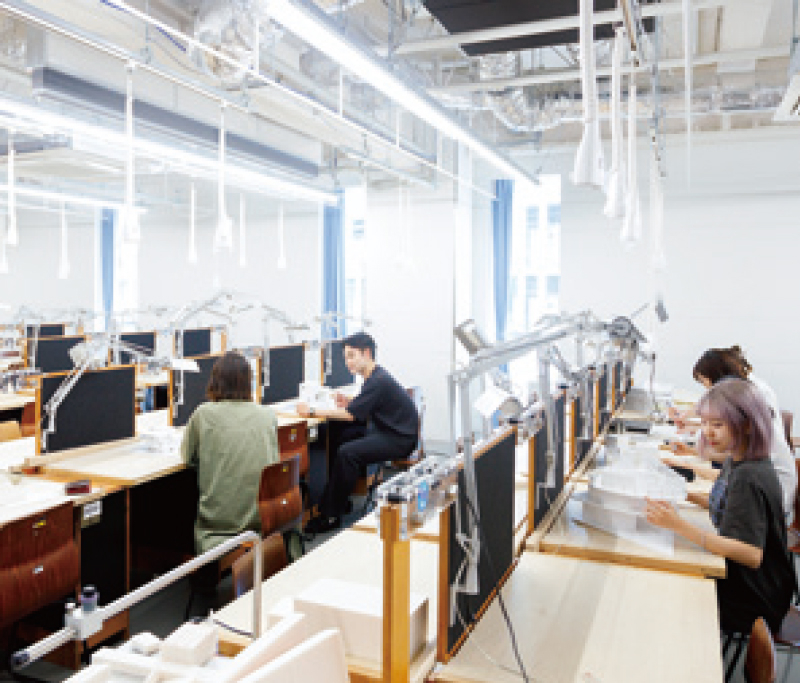
■ Nursing Practical Training Rooms
The practical training rooms used by Department of Social Welfare students include rooms that recreate actual nursing settings and rooms to practice bathing care. Students learn the core skills needed to support those who require care through experiencing their living situations.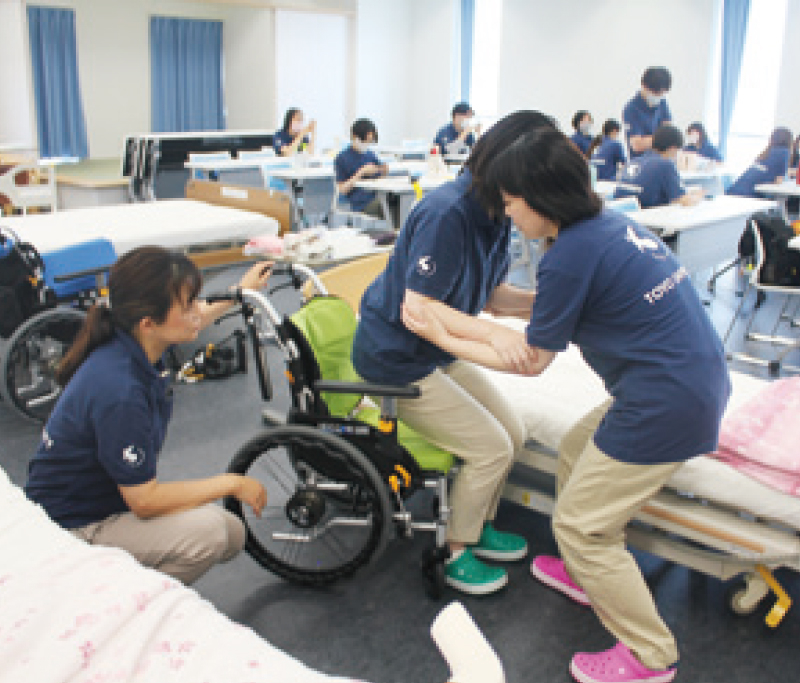
■ Cafeteria
An extensive range of healthy menu items are on offer at the cafeteria, which is bustling with students at lunchtime. It also features an open area where students can interact with their friends and teachers and relax between classes.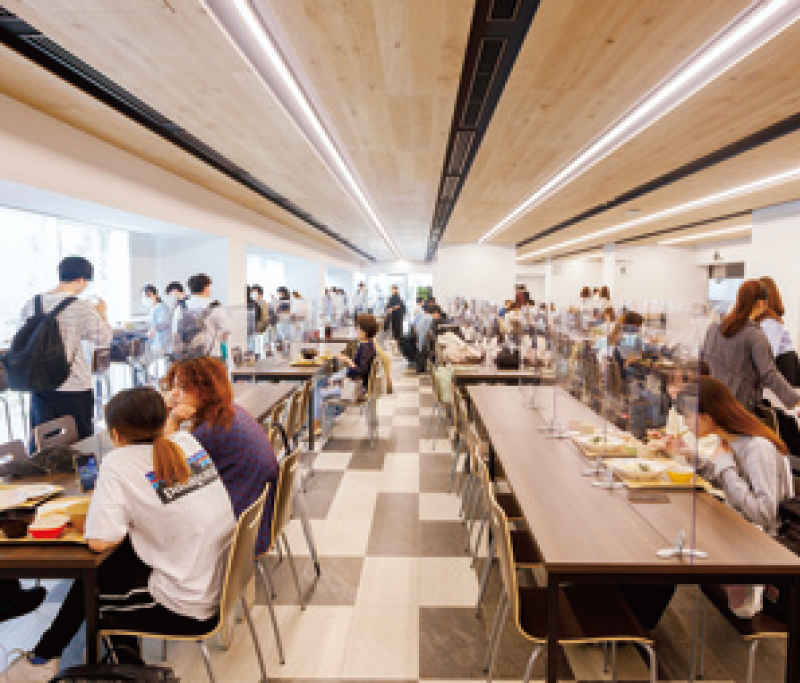
◆Regarding other facilities and amenities, please refer to Toyo University News No. 269 (March 2023 edition).
▶https://www.toyo.ac.jp/about/gakuhou/
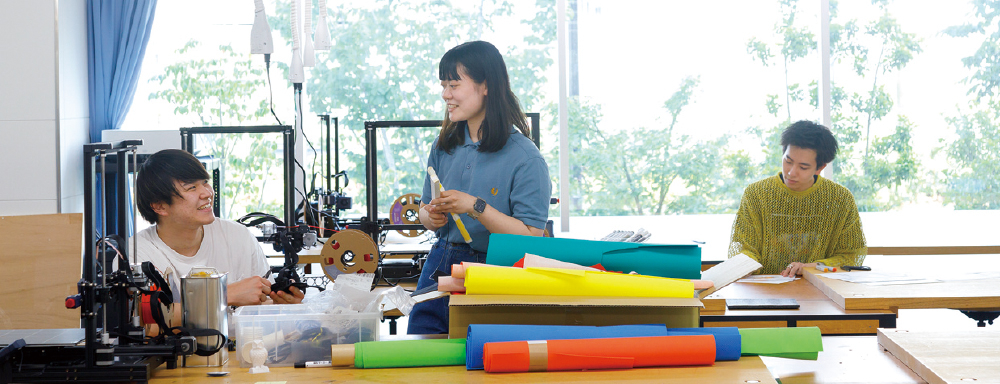
NEW Faculty of Design for Welfare Society
The Faculty of Design for Welfare Society aims to cultivate individuals who contribute to realizing and developing a society where everyone is respected and can live a healthy life. The Faculty is comprised of the following three departments: The Department of Social Welfare, where students gain a deep understanding of changes in social-economic matters, such as policies, systems, and welfare business, as well as the knowledge and practical skills required in support settings; The Department of Child Studies, which aims to foster child-support professionals who work collaboratively to contribute to better community building by deepening their understanding of a variety of issues related to children, guardians, families, and local communities; The Department of Human Environment Design, students learn about Universal Design in social, urban, residential, and lifestyle spaces where diverse people live, broaden their perspective to include the role and potential of design in real-world settings and think holistically about human activities. Students will gain knowledge and the practical ability to design systems, physical spaces, and concepts of future societies. They will do this by cultivating the ability to consider the issues of an increasingly diverse and complex modern society from multiple angles and cooperating with a deep understanding of each department’s specialist fields.
▶Educational Content of Each Department
| Department of Social Welfare Studies | 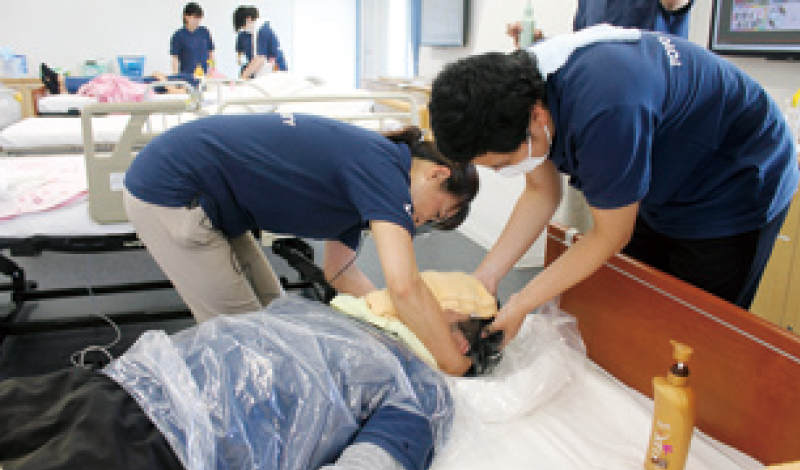 |
| To adapt to a diversifying and complex modern society, students learn about the concept of welfare from a wide range of topics, including elderly welfare, child and family welfare, disability welfare, in addition to gender and welfare, and welfare in schools. | |
| Department of Child Studies | 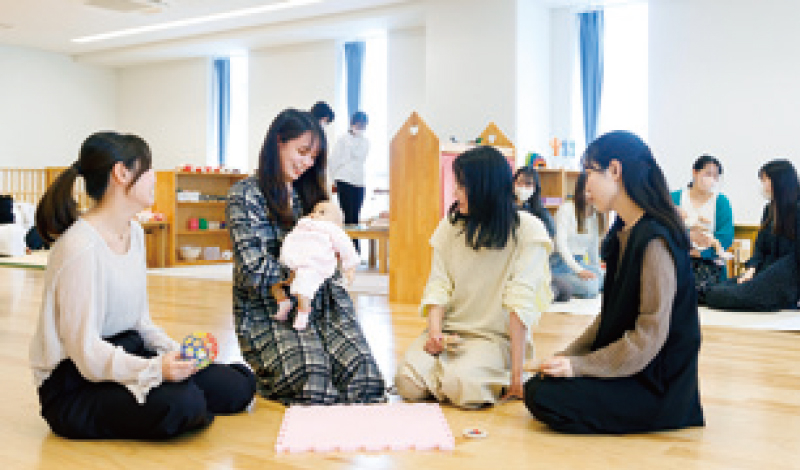 |
| In addition to acquiring expertise regarding childcare and early childhood education, students also study the language, culture, history, and lifestyles of other countries to enhance their understanding of childcare and education in a multicultural society. Students also study the diversity of children and families, including gender and disabilities. | |
| Department of Human Environment Design | 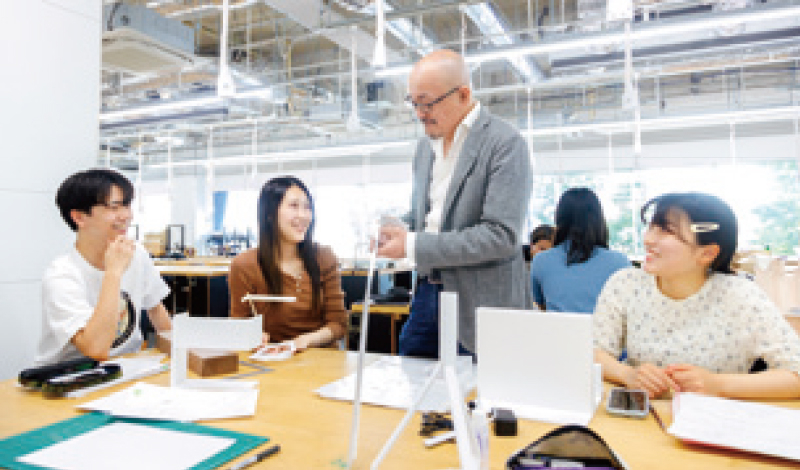 |
| Students study various fields in architecture, urban development, physical spaces, and concepts to acquire the ability to propose designs from the universal design perspective. Students acquire the mindset to solve social issues from a design-based approach in Special Design, Living Environment Design, and Product Design courses. |
PICK UP Faculty Member: Research Content
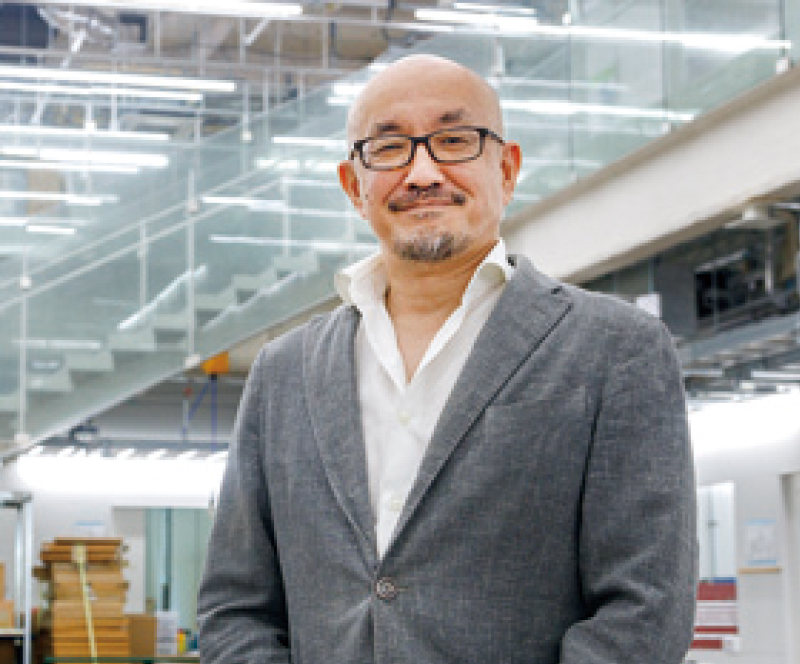 |
Associate Professor and Laboratory Head Ryo Kashiwagi Research Field: Product Design, Department of Human Environment Design |
| As a corporate product designer, I first worked with electrical appliances before moving to a different industry, where I designed furniture. At this time, I was shocked to find that the approaches to design in the two fields were utterly different. I wondered whether it was okay if design norms varied by field, even when creating something for the same assumed end-user. While having such doubts, I discovered that Toyo University was creating the Department of Human Environment Design. I felt that an environment where you can learn everything from product design to architecture and urban planning in a single department could be a place that could provide the education to resolve my questions. My current research theme involves building systems where furniture can understand peoples’ daily behavior by embedding sensors into furniture and detecting human movement. I teach my students the design mindset, which portrays the attitude required to generate ideas and what matters they need to focus on. In my classes, students learn systematically about topics from product design to architectural design and welfare for urban development. Students in the Department of Human Environment Design are all honest and straightforward. I hope that through their learning here, more and more students will have the passion to survive and thrive in the world of design and creativity. | |

NEW Faculty of Health and Sports Sciences
The Faculty of Health and Sports Sciences aims to cultivate individuals who contribute to improving peoples’ QOL (Quality of life) through sports and who also contribute to solving social issues brought about by a declining birthrate and aging population, and globalism. The faculty is comprised of the following two departments: The Department of Health and Sports Sciences, where students explore using sport as a solution to the various problems—with a focus on health problems—of society with population decline caused by an aging population and declining birthrates, and they study health and sports science from functional, social and cultural perspectives; The Department of Nutritional Sciences where students explore both nutritional sciences and sports science with a foundation in nutrition. Here, students aim to improve sports performance and health from the perspective of food and nutrition and create new value in sports nutrition science. Students will acquire cutting-edge and specialized knowledge and skills related to health, sports, diet, and nutrition. With philosophy, science, and passion, they will create new possibilities for human value through sports.
▶Educational Content of Each Department
| Department of Health and Sports Sciences | 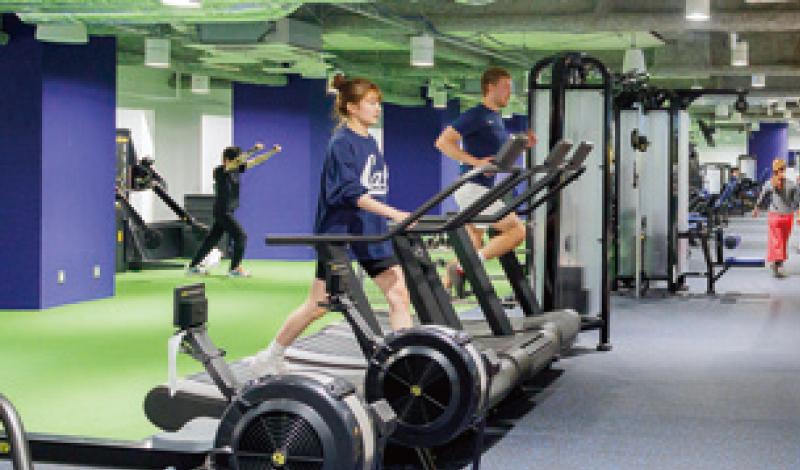 |
| Students study expansively, covering the eight units of Human Body Science, Community Health Sports, School Health & Sports Education, Health & Sports Culture, Athletic Conditioning, Coaching, Sports Information, and Sports Business. We provide students opportunities to practice sports and conduct advanced learning and research. In addition to sporting arenas, we have installed we have set up educational research training rooms, conditioning rooms, laboratories where students can analyze the functions and structures of the human body, and ICT facilities that can be utilized to analyze big data. | |
| Department of Nutritional Sciences | 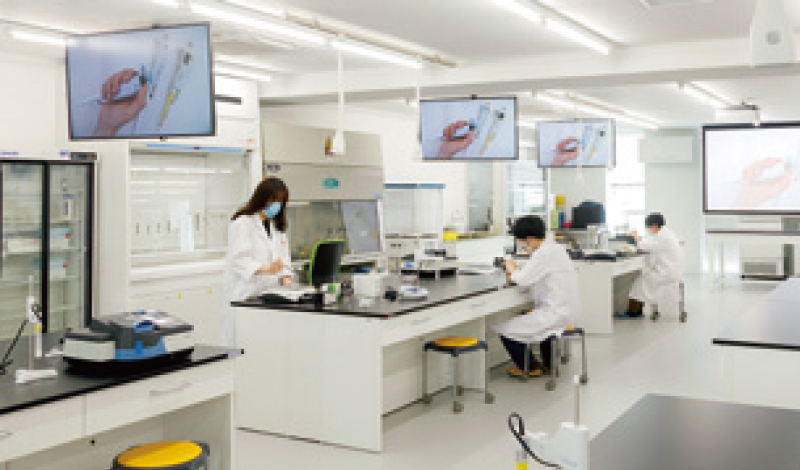 |
| We use Project Based Learning (PBL) for each unit. Units are based on one of the four academic areas: Nutritional Epidemiology & Education, Sports Nutrition & Physiology, Food Science, and Lifestyle Disease Prevention. This allows students to deepen their understanding of the diverse fields of nutrition. Also, we have set up classrooms for cooking and cafeteria practicums, in addition to laboratories for measuring energy metabolism and food nutrition, creating an environment for practicing sports and nutritional science education and research. We also provide compressive support for obtaining nutritionist qualifications. |
PICK UP Faculty Member: Research Content
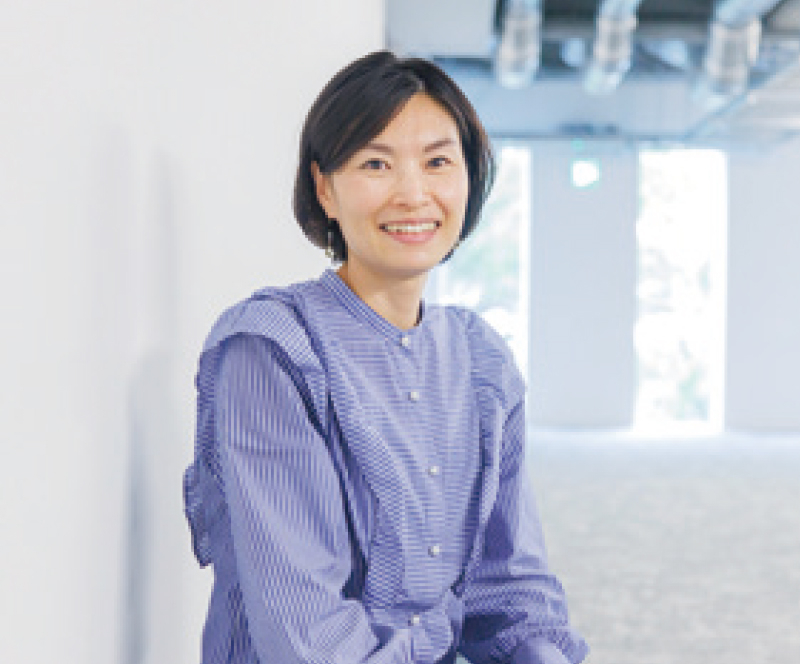 |
Associate Professor, Kaori Eda Research Field: Sports Psychology, Department of Sports and Health Sciences |
| As an athlete with competitive experience myself, there were times when I struggled to improve my performance, and I didn’t know who to talk to. During such struggles, I became interested in psychology and studied clinical psychology in my master’s degree and sport psychology for my doctorate. Since finishing my postgraduate studies, I have dedicated my career to providing psychological support for athletes. And from this Spring, I have taken on a role as an instructor in the newly established Faculty of Health and Sports Sciences. My research theme is focused on athletes’ self-development, and I am looking into how athletes can improve their performance while developing their mentality based on their competitive experience. I am also conducting research while supporting the mental health of junior athletes and those who have returned to competition after pregnancy and childbirth. I have worked behind the scenes, providing mental support for athletes for a long time. Whereas as an instructor at Toyo University, I will take a more front-facing role in guiding students. This will be a different way of interacting with people, which will be exciting, and I think it will be a new challenge for me. The students in my seminar are dedicated and highly motivated to learn. I think this is due to the passionate education provided by the teachers of the former Faculty of Human Life Design. Sports psychology classes, which is my research field, will start in the fall semester, and I am looking forward to meeting passionate students. | |